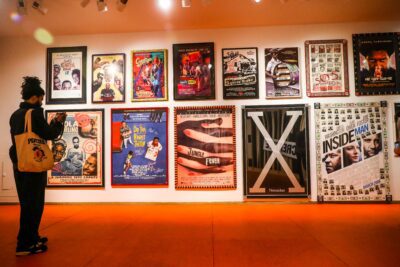“How to Quit”: Williamsburg, Addiction, and Ryan Gosling


I heard Kristin Dombek read parts of her essay “How to Quit” at BookCourt on a Friday night. The reading was part of the launch of the 15th issue of lit journal, n+1. A party would be held in Bushwick the following night. Dombek was introduced by Nikil Saval, an editor of n+1, and he described her piece as being about “sex, drugs, some music, and Ryan Gosling.” I can’t say that this made me automatically hopeful, although it didn’t turn me off completely. What it made me think first was that I should use those words in a headline because all of those words are words that are apparently—statistically—endlessly fascinating to young Brooklyn readers, and I too write for young Brooklyn readers. But I was a little wary, because, what else is there to say about sex, drugs, and Ryan Gosling? Should we be writing about something else? 2012 is almost over. We kind of live in a post-apocalyptic society, if that’s even something that can kind of exist. Shouldn’t there be other things that concern us? Plus, and this is clearly my own problem, I am always thrown off a little by encountering people with the same name as me, especially when the spelling is identical. I know this is a strange thing, and maybe not relevant, but it does inform how I was feeling as Dombek walked the short distance from her seat with the n+1 editors to the lectern to read. What I mean to say is that I wasn’t feeling exactly predisposed to liking the piece. Which is so unfair. But true. And this was partly because of how little I relate to the way most people write about sex and drugs, and partly because of the name “Kristin.” I don’t know why the name thing bugs me, but it always has. I don’t know what I’d be like if I was a “Jennifer” or something equally as common, but it would not be good, probably.
Anyway, I had been fortunate enough to receive a copy of the newest issue before the reading and had read most of it. It really is an excellent issue, opening with a brutally funny dissection of “dead white magazines” (The Paris Review as “the literary equivalent of a Todd Haynes film”), continuing on with Julia Grønnevet’s incisive and wrenching first-person account of the Anders Behring Breivik trial in Oslo, and ending with what is one of the few non-adulatory reviews of Katharine Boo’s National Book Award-winning “Behind the Beautiful Forevers.” I skipped only Dombek’s essay because I wanted to hear it in her voice first. I guess I’m glad I waited, although I’m not sure now why I thought it was necessary. It couldn’t have been better or worse, I guess, it could only be what it is. And it is wonderful—honest and funny and sad and perfect. It is about music and it is about sex and it is about drugs and it is about Ryan Gosling, but also, it is about this world we live in, here in Brooklyn, this post-apocalyptic world.
I don’t know that Dombek would really consider us as living in a post-apocalyptic-world. She writes a great deal about gentrification and about how “gentrification is the opposite of the apocalypse. The apocalypse would pause history, level the built world to a pile of trash, and most likely lower rents considerably. Gentrification churns history forward, takes out the trash, carts away rubble, hides the poor, makes you work more and more to manage your rent, and encrypts the past, when you didn’t have to work so many jobs just to fucking live here, behind its glossy surfaces.” But I don’t think those two things are mutually exclusive. Brooklyn has been home, it seems, to several mini-apocalypses while still experiencing wave after wave of gentrification. Stasis and motion can easily exist in tandem, and, in fact, they usually do. They are two sides of the same experience, neither of them is more real, but both corrupt the integrity of the other. And it is this constant interplay of destruction and development that has not only defined Williamsburg—and much of Brooklyn—in the last couple of decades, but also has defined the lives of many of the people who live here.
You might also like 




















